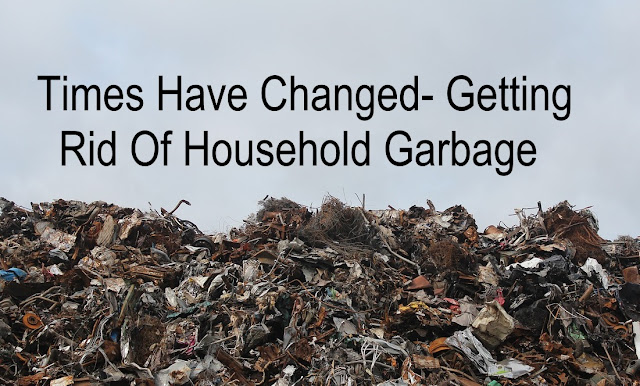Times Have Changed - Getting Rid Of Household Garbage
 |
| Title added to image by Pexels from Pixabay |
Over the course of my life the amount of rubbish the average household produces has increased and the way we dispose of garbage has changed. These days there is growing awareness of the problem caused by disposing of garbage.
A rubbish pit in the yard
When I was a child we lived on a property of nearly six acres out in the country. There was a big pit in one corner of the yard where all the household rubbish was emptied and then covered over with a thick layer of soil. There was no public rubbish dump for us to use. We didn't produce much rubbish each week and much of it rotted into the soil. We didn't use much plastic back then and more items were made to last.
Rubbish dumps
While I was still at primary school a rubbish dump was created about a kilometre from home. My parents now had the convenience of a place away from home to drive to and dump their rubbish. The dump was open 24/7 and was free to use. Some people found it a good place to go and find things they wanted.
A few years later the rubbish dump was fenced in. A strong gate with a lock appeared. The dump was only open certain hours and shock, horror, people had to pay to dump their rubbish! What was the world coming to?
Rubbish collection
When I married we lived in the city and there was a weekly rubbish collection. We put one small metal bin out on the curb weekly. The garbage collectors emptied it and that was our garbage problem solved. At that time everything went into the one bin, there was no sorting rubbish into separate bins, no recycling. Also, one small bin was big enough for our weekly rubbish.
 |
| Big enough for a week's rubbish Image:Clker-Free-Vector from Pixabay |
Increasing consumerism
Households gradually bought and consumed more. More convenience foods, more disposable items, many with lots of packaging. This resulted in an increased amount of rubbish they needed to get rid of.
Recycling
Then came recycling. Households were issued with a large bag in which they were instructed to put recyclable items. Drink cans and bottles and newspapers could also be dropped off at certain recycling centres run by groups such as the Scouts for fund raising.
After a time the bag was replaced with a large wheelie bin for recyclables. A smaller bin was provided for general rubbish and at some time a third bin, a large one the same size as the recycling one was introduced for grass clippings and other green waste.
Working out which bin an item should go in is quite complicated. Yes, some things are pretty obvious. Clean empty glass jars and bottles go in the recycling bin.
However, hardened glass, pyrex glass dishes, drinking glasses, mirrors, window panes and light globes shouldn't. One of the hardware stores here collects light globes for recycling. As far as I know, the other types of glass need to go in the general bin.
Clean cardboard can go in the recycling bin. However greasy pizza boxes can't. And then there is the tissue box which is made of cardboard but has a bit of plastic on the top. The plastic needs to be removed before the cardboard is dropped into the recycling bin.
 |
| Recyclables Image:Marie Vonow |
There is an increasing awareness of the problem all our garbage is causing to the environment. Numerous books have been written on the topic and there is information on the internet. I recently purchased some reusable bags to use when I buy fruit and vegetables instead of putting these items in plastic bags. Some people are looking back at the way their great grandparents lived to find ways of creating less garbage. If you have any tips please write them in the comments section, thanks!



Comments
Post a Comment
Thank you for your comment xxx What a Darling!